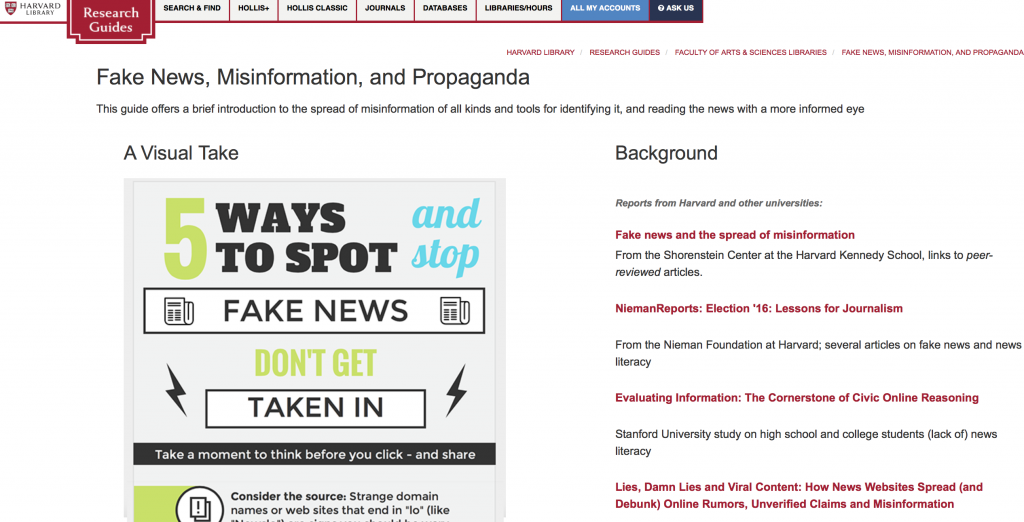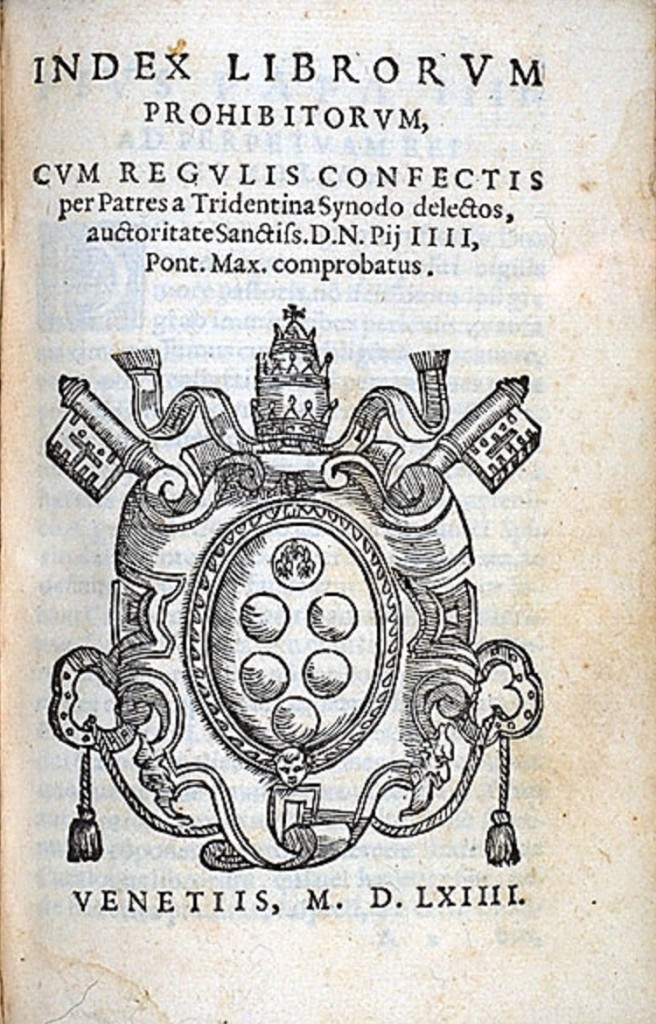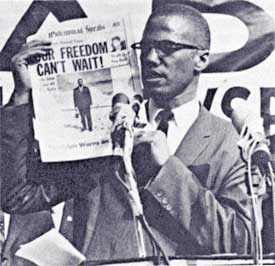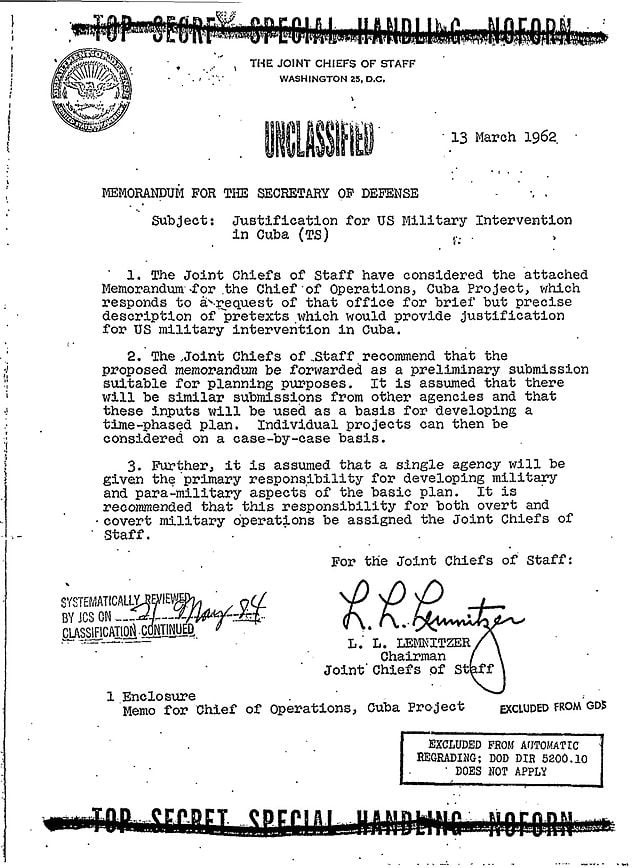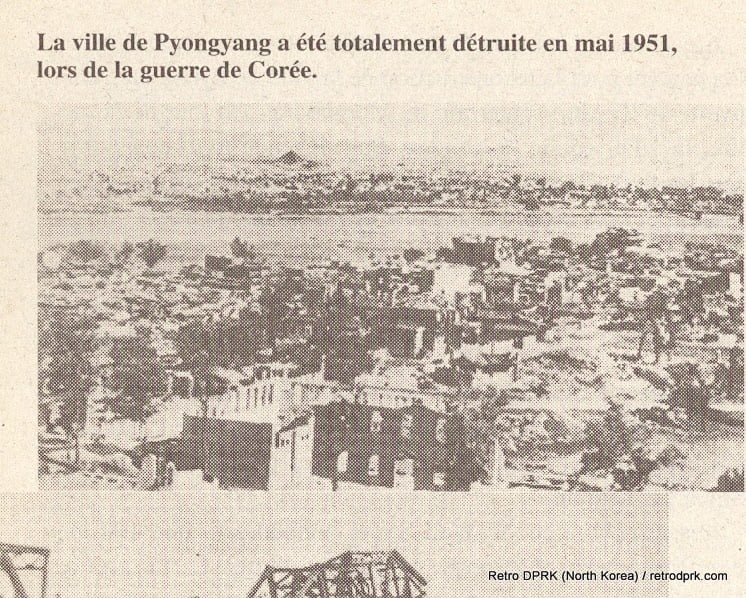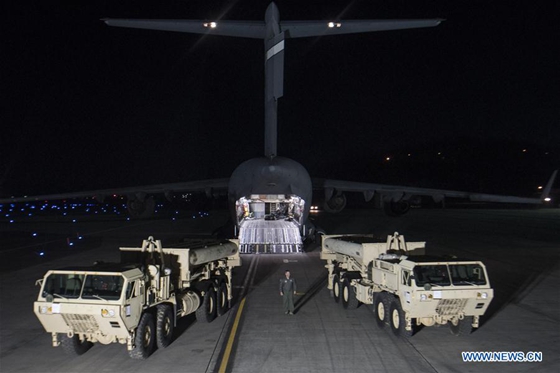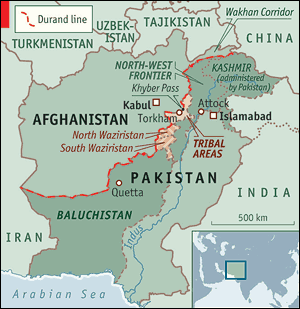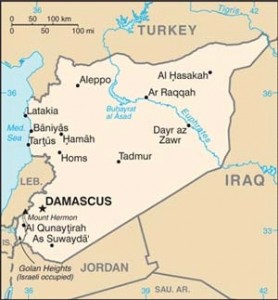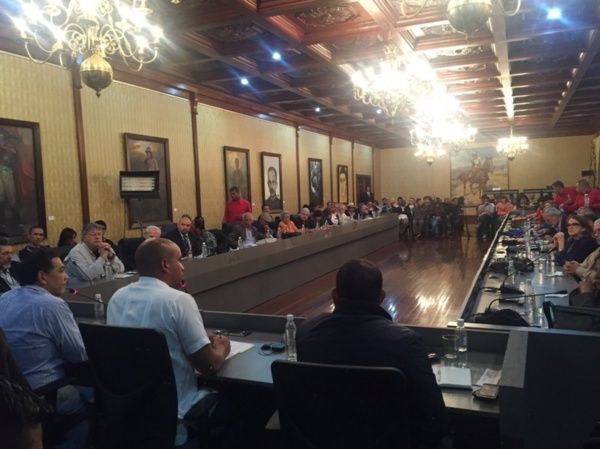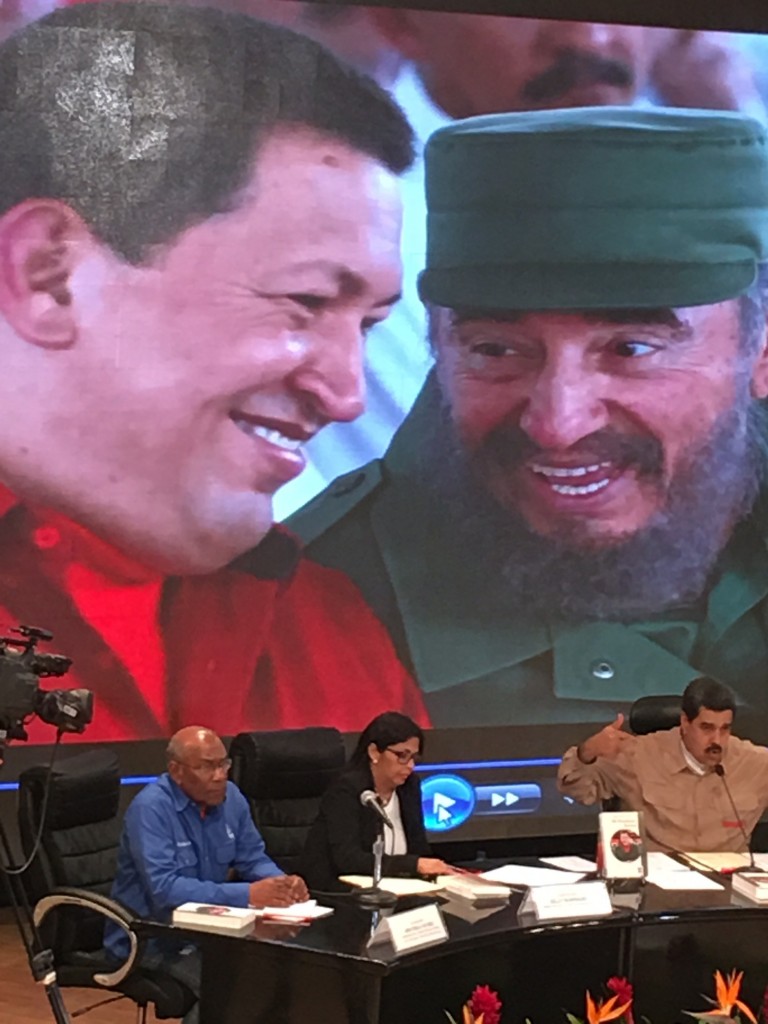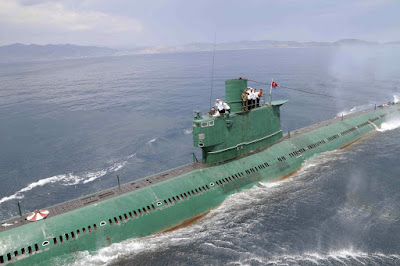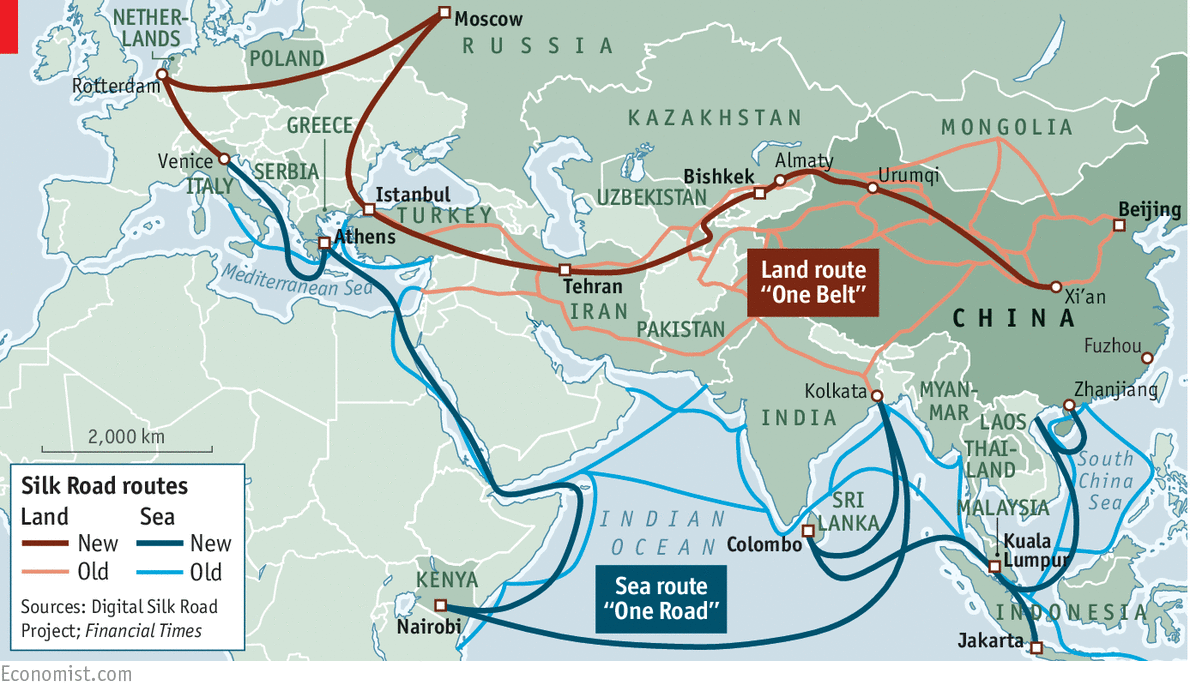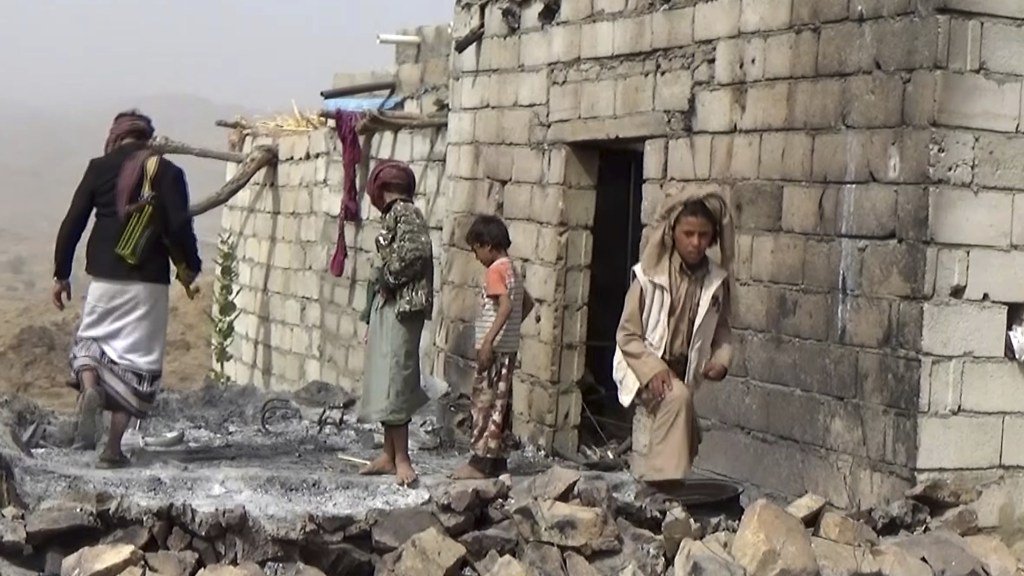The Failed State Belt
The second-last African region under Hybrid War study is the Failed State Belt of South Sudan and the Central African Republic (CAR), which together form a black hole of chaos in the North-Central part of the continent. These states weren’t always the disorderly and dysfunctional, but were made so because of covert American interference into their affairs.
Had it not been for these geostrategic locations’ descent into anarchy, then they would have otherwise served as ideal transit locations for future multipolar transnational infrastructure projects linking two of Africa’s leading countries together, Ethiopia and Nigeria, all while passing through resource-rich areas along the way. This vision is now totally smashed and unlikely to be revived anytime soon, seeing as how deeply divided these two states are and the intensity with which they’re embroiled in identity-driven fratricidal hatred. Nonetheless, it was necessary to speak on the positive role that the Failed State Belt could play had it not been intentionally turned into such a cauldron of intractable conflict.
As for the research at hand, it focuses mostly on South Sudan, which is much more likely than the CAR is to play host to another regionally significant conflict. The never-ending unrest within the country could also easily permeate its neighbor’s non-existent eastern border and set off a renewed chain of conflict there. The two countries most directly affected by an outbreak of significant violence in the CAR are Chad and Cameroon, while the regional leaders of Sudan, Ethiopia, and Uganda are most at risk of being threatened by the destabilization of South Sudan. This second category of countries will thus be addressed in the present article, while the ones most pertinent to the CAR will be discussed in the forthcoming chapters dedicated to each of these two states. Either way though, it’s unmistakable that South Sudan and the CAR are the most failed and conflict-prone states in all of Africa, and that their internal problems can effortlessly spill throughout the region if they’re not proactively contained.
South Sudan Introduction
Violence has expectedly flared up once again in the perennially ungovernable East African land that’s internationally referred to as “South Sudan”, with the latest reports stating that forces loyal to President Salva Kiir and Vice President Riek Machar suddenly started killing one another in the capital during the country’s fifth independence anniversary, despite having previously signed a ceasefire and agreed to a transitional government.
The earlier period of unrest that the previous agreement was presumably supposed to end had killed upwards of 50,000 people during the brutal two-year conflagration, and the deaths of a few hundred people over the weekend raised global concerns that the country’s two political rivals are slipping back into their old fratricidal habits.
Predictably, the international media is awash with articles about the horrors of the previous years of violence and statistics about the extent to which South Sudan has regrettably become a failed state, but lost amidst this emotive heart-grabbing reporting is a serious discussion about the geopolitics of the South Sudanese Civil War, which is absolutely essential for observers to grasp in order to acquire a better understanding of the US’ diabolical designs for the transregional strategic space between East and Central Africa.

Kiir vs Machar
Basic Facts:
The superficial cause for post-independence South Sudanese violence has been attributed to the personal rivalry between President Kiir and Vice President Machar, but there’s actually a lot more to it. Before elaborating on the deeper causes of the conflict, it’s necessary to address the most publicly consumable mainstream media explanation for what’s happening in the country. Both Kiir and Machar are highly celebrated veterans of the South Sudanese insurgency against Khartoum, with the former being John Garang’s deputy (the late leader of the modern iteration of the movement) while the latter was his intra-organizational adversary for most of the 1990s.
Each of these politicians also represents one of the country’s two leading ethnicities; Kiir is a Dinka and Machar is a Nuer. Neither of these groups is anywhere close to a majority of the South Sudanese population, but it’s just that their pluralities of 35.8% and 15.6%, respectively, make them the two largest identity blocs. The Dinka and the Nuer share a history of viciously strained relations, drawing back most relevantly to the period of British occupation. The Library of Congress Country Study on Sudan alleges that “some sections of the Dinka were more accommodating to British rule than were the Nuer”, and that “these Dinka treated the resisting Nuer as hostile, and hostility developed between the two groups as result of their differing relationships to the British.”
Bad Blood:
Both groups sporadically fought one another after Sudan became independent in 1956, despite nominally being on the same side in the decades-long South Sudanese secessionist war. Machar’s uprising against Garang, despite not necessarily being motivated by ethnic considerations, can be seen in hindsight as indicative of the distrust between these two communities, seeing as how the leader of the Sudan People’s Liberation Army (SPLA) was Dinka and his rebellious commander (who was one of several) was Nuer. Following the two sides’ formal reconciliation in the early 2000s and Machar’s reintegration into the SPLA, the prodigal fighter was made Vice President of the Government of Southern Sudan after the 2005 Comprehensive Peace Agreement ended the Second Sudanese Civil War and paved the way for the South’s eventual 2011 independence referendum.
Half a year later in the summer of 2005, Garang – who was the first Vice-President of Sudan and President of the Government of Southern Sudan – was killed when the helicopter he was flying in mysteriously crashed on its way back from Uganda, and Kiir ended up being appointed as his replacement. Whereas Machar’s rivalry with Garang had ended, his competition with Kiir had only just begun, though the same ethnic template of Nuer-Dinka distrust was distinctly still in play. The two insurgents-politicians retained their positions throughout the country’s post-2011 independence transition, but Kiir eventually grew suspicious that Machar was plotting to overthrow him and dismissed him from his position in July 2013.
Machar’s removal wasn’t an isolated incident, though, since Kiir was also in the middle of purging many military figures as well. The South Sudanese President’s centralization of power appeared to be an unconstitutional power grab and almost immediately polarized the country’s society. Because of the ethnic overtones of Dinka Kiir’s dismissal of the country’s top Nuer politician, members of Machar’s ethnic community began to redirect their armed militias against the government, fearing that the Dinka might be plotting a large-scale and possibly violent marginalization of their group. Tensions boiled over in December of that year when clashes broke out between Machar’s loyal forces and Kiir’s military, thus beginning the horrendous civil war that still continues to this day.
The Trick:
President Salva Kiir’s government in Juba had been resolutely against any foreign military presence on his country’s territory, notwithstanding the Ugandan humanitarian operation that evacuated its citizens, but all of a sudden surprisingly agreed to 13,300 regional peacekeepers in early August. The reason for this unexpected about-face was that Kiir had apparently planned all along to invite foreign forces into South Sudan at the moment that he felt that he could use them to maintain his strategic advantage over Machar. What had happened in the run-up to Juba’s acceptance of the international force was that the Vice-President and his allied militias retreated from the capital and implored the UN to keep the peace between the two sides. Unbeknownst to Machar, however, is that he had just inadvertently ceded his own political-strategic leverage over Kiir, since after having left Juba on his own volition, he was no longer in any position to return to power after the President cunningly dismissed him from his position and appointed a replacement leader.

Salva Kiir Mayardit
It was in the immediate aftermath of this ‘constitutional coup’ that Kiir permitted the 13,300 regional troops to enter South Sudan, recognizing that despite the political intrigue that he had caused and which might likely lead to yet another bout of fighting, the peacekeepers’ only duty is to separate warring sides, not mediate domestic disputes. In all actuality and given the present circumstances within the country, the only party that could conceivably reinitiate violence in South Sudan is Machar’s, no matter how seemingly justified he might be in this regard. All that matters to the foreign servicemen is to pin the blame on whichever militarily aggressive party violates the ceasefire and to correspondingly hold them accountable, which thus places all of the cards in Kiir’s favor for sustaining his ‘constitutional coup’ and keeping Machar out of office. It seems unlikely that the former Vice-President’s forces will militarily engage with Kiir’s army near the capital or anywhere within sight of the peacekeepers, but they might instead do so in the countryside where there are considerably less foreign observers, which could again throw the artificial country back into the active throes of civil war.
South Sudan vs “New Sudan”
The First And Second Sudanese Civil Wars:
Reflecting on the recent independence of South Sudan, it becomes reasonable to wonder why the territory of the world’s newest country was even attached to Sudan in the first place. Although both Sudans were occupied by the British, London administered them separately for most of the time, keeping the Muslim and Arab north divided from the Christian and Sub-Saharan African (black) south, as has traditionally been the case for centuries (with northern slave raids being the most memorable exception). These two civilizationally dissimilar areas were patched together right before unified Sudan’s 1956 independence, thus artificially forcing together two separate categories of people who previously had close to nothing to do with the each other for decades aside from their nominally shared administrative position under the British imperial umbrella.
Looking back on it, the only way that the Khartoum authorities could have mitigated the ‘organic’ rise of Southern discontent would have been if they had implemented a broad federal system throughout the country that divided it into quasi-independent regional statelets, which in that case could have even led to eventual intra-regional sub-state political divisions between the North and South’s various constituent identities. The government chose not to proceed along that uncertain and existentially dangerous route and instead opted for centralization, which inadvertently exacerbated tensions with the South. The US and Israel, eager to undermine a majority Muslim and Arab country during the Cold War, threw their support behind the Southern insurgents by providing weapons and other forms of covert assistance, as well as the more obvious form of informational backing via their mass media and lobbyist channels.
The First Sudanese Civil War ended in 1972 but re-erupted in the 1983 after Khartoum decreed that the entire country and its multi-faith citizenry would be forced to abide by Sharia law. The SPLA was formed right before this earlier in the year, so it’s not exactly a clear-cut case that Sharia law was fully responsible for the return of civil war. Oil had already been found in the South by that time, so the US and Israel now had an added economic motive to promote Southern separatism other than their preexisting geopolitical imperatives. The institutionalization of Sharia law incidentally happened to be a convenient event that added renewed ‘legitimacy’ to the Southern black Christians’ insurgency at the most perfect time that it could have happened. In the eyes of the Western world, the South Sudanese were fighting against “Arab Islamic oppression”, which thus earned them enormous sympathy from evangelical churches in the US and thereby become a ‘common cause’ among the American public at large.
Identity Federalism As The “Solution” To Separatism:
Unbeknownst to most, SPLA leader John Garang wasn’t so much a separatist as he was a ‘federal reformist’. His vision for a “New Sudan” was to implement the same broad-based federal system that was described earlier so that the peripheral populations could have a greater political say in the pluralistic country’s affairs. Garang saw the South as the vanguard of a larger nationwide movement that would unite all of Sudan’s other groups against the central authority, though simultaneously unraveling the strands of Sudanese Patriotism that had earlier held them all together. The fulfillment of his plans would have led to Identity Federalism in Sudan, or the carving out of several partially independent subnational identity-based statelets and the de-facto dissolution of a unified Sudanese space governed from Khartoum.
Garang was killed before he ever had a chance to use his newly created position as Sudan’s first-ever Vice-President to tangibly promote this project through the national framework, and with him also died the idea of a “New Sudan”. His successor, Salva Kiir, did away with any talk of Identity Federalism and instead advocated chiefly for South Sudan’s independence, which it would receive in 2011 after 98.83% of the population supported it in a referendum. Had Garang still been alive and used the chance to advocate for his more inclusive pan-Sudanese policy instead, there’s a chance that South Sudan would never have been independent in the first place and Sudan proper would administratively look entirely different than it does now. Evaluating the events of the past decade since the 2005 peace accord was signed, it’s plain to see that Garang was likely killed in order to sabotage his “New Sudan” plan, prompting analysts to investigate which forces had an interest in his death and whether it yielded the expected strategic dividends.
Pernicious Contagion vs Militant Amputation:
John Garang’s “New Sudan” policy sought to utilize Identity Federalism as a means of gradually undermining Khartoum’s authority throughout the entire country and fundamentally transforming the political-administrative space within its erstwhile unified borders, while Salva Kiir’s blind pursuit of separatism saw him dislodging South Sudan from its eponymous whole and amputating the political contagion from the host body. Therefore, whoever it was that killed Garang most likely wanted to promote Kiir’s separatist “solution” and didn’t want to bother with the former leader’s drawn-out Identity Federalism stratagem. This makes it reasonable to suggest that there could have been a “deep state” rivalry between competing members of the American military, diplomatic, and intelligence permanent bureaucracies over which policy would be the most effective for dismantling all of Sudan and bringing its entire territory under the divide-and-rule influence of the US.

John Garang
Garang and his advocates wanted to keep the target intact long enough for the political virus to take hold and infect the rest of the country, though this policy might have been seen as a risky long-term gamble that could potentially be counteracted or reversed if unexpected future developments occur. Kiir and his backers, on the other hand, thought it much better to ‘leave the game’ with a tangible ‘prize’ instead of risking everything that they thought they had gained, being content enough with geopolitically stealing almost half of the country’s territory and just about all of its lucrative oil reserves (the third-largest on the continent). The supporters of this approach might have figured that if a later decision was made to continue the destabilization or outright dissolution of Sudan proper, then the South could offer safe haven to a bevy of CIA-supported separatist and/or federalization groups intent on undermining the central authorities of the remaining rump state. Furthermore, the separation of South Sudan would immediately create an easily manipulatable oil transit crisis between Juba and Khartoum, thus allowing the US nearly limitless opportunities for interfering in their bilateral relations and tangentially taking China’s supply there hostage.
Blowback:
Paradoxically, it turned out that the decision to separate South Sudan from the rest of the country actually worked out to Khartoum’s benefit, or at least in the short-term. There was no way that the Arab Muslim north was ever going to regain hegemony over the black Christian south, especially not in the context of the US now being an instrumental party to the ‘peace process’. If the central authorities made a ‘wrong move’ against the South, the US could have potentially used that as an excuse to implement a “no-fly zone” over the area and thereby ‘justify’ the destruction of the entire Sudanese Air Force in the process. After all, it’s not for naught that Wesley Clark admitted in his memoirs that the Bush Administration had the goal of overthrowing the Sudanese government during the 2000s, and this could have provided the most feasible scenario for doing so.
Additionally, the strong argument could be made that reincorporating South Sudan back under Khartoum’s authority would have been just as strategically suicidal for Sudan as reincorporating Poland back under Moscow’s authority would be for Russia, and that the virulent hate that that the South Sudanese and Poles have for their former compatriots guarantees that they’d fight to the death if that ever happened and thereby embroil their former administrators in a quagmire of debilitating proportions. Just as Russia obviously realizes the futility in doing so and harbors absolutely no designs against Poland (despite the NATO propaganda to the contrary), so too did Sudan have no interest in falling into this trap and therefore displayed full support for South Sudan’s choice when it voted for independence. Another complementary reason for why Khartoum voiced no objection to Juba’s eventual secession was that it was cognizant of the Identity Federalist plot of “New Sudan” and found it preferable to amputate its infected appendage before the political virus consumed the whole country.
Without an enemy to rally against, nor a common cause to unify around, the old South Sudanese rivalry between the Dinka and the Nuer crept back to the forefront of regional politics and was ultimately responsible for initiating the civil war. The progressive administrative-political result of this conflict has been the devolution of the state into a de-facto federal structure, with Kiir controversially decreeing in late-2015 that the 10 states that used to comprise South Sudan be divided into a total of 28 separate units. The virtual implementation of Identity Federalism wasn’t intentionally issued as a conspiratorial plot by Kiir to cripple his own country, but instead as a nepotistic plan to create the illusion that his Dinka ethnicity has disproportionate political influence. A sizeable number of the new states that were created are majority or heavily Dinka, thus propagating the idea that they have more clout in the country and its parliament. Also, the splitting up of the Nuer-inhabited Jonglei state into several smaller ones could be perceived as a punitive attempt to further weaken this constituency through a divide-and-rule policy that marginalizes them even more in each newly created state and keeps them administratively disunited from one another.
The Energy-Security Nexus:
The only interests that Sudan still has in its former southern autonomous province are security and energy. It’s difficult to defend the long and porous border from militant infiltration, but it’s still comparably easier on the state than struggling to secure all of South Sudan at the same time. As for energy, Sudan only needs the South to reliably continue exporting its oil through the preexisting pipelines that still link the two countries. This is a win-win for both sides because Khartoum and Juba are equally desperate for the revenue and foreign currency that energy exports provide, but in the event of inevitable transit disputes such as the one that previously erupted, it was predictable that donor-dependent and economically despondent South Sudan wouldn’t be able to hold out as long as more structurally sound Sudan.
Although both sides financially bled throughout the high-stakes game of ‘chicken’ that occurred in 2012-2013, there was never any doubt that Khartoum would come out on top, and Sudan knew this the whole time and well in advance. However, it can also be said that the US might have thought that the indefinite disruption of transit payments to Sudan could have instigated an economic crisis with time, one which might have been used as cover for launching a Color Revolution against Khartoum. Despite the South Sudanese Civil War all but stopping oil exports for the past couple of years, the Sudanese government hasn’t fallen, though its rejection of Iran and full-on embrace of the Saudis might explain why the government was spared from the intensification of such asymmetrical scenarios.
A Fork In The Road
South Sudan stands at the juncture of two completely opposite futures, both of which greatly affect multipolar and unipolar strategy in the Central African-East African transitional zone:
Stabilization:
Even though it doesn’t seem likely right now, there’s always the chance that South Sudan will eventually overcome its internal challenges and emerge from its terrible turmoil as a semi-stabilized state. It would of course be better if this happens sooner than later, but nonetheless, its ultimate occurrence is in the interest of many global players. UN peacekeepers, however inept they may historically be, have been deployed to the young state, and in an historic first, China even contributed hundreds of its own forces to assist. Russia’s not sitting on the sidelines, either, having voiced its earlier objection to Western-proposed USNC economic and weapons sanctions against the country, even openly countenancing the possibility of selling arms to the government if the situation improved.
Both countries would like to see South Sudan develop into a pivotal transregional infrastructure and logistics hub between Central and East Africa, potentially even functioning as a transit state in a future New Silk Road project connecting the bullish Ethiopian economy with the continent’s largest one in Nigeria, provided of course that the situation in the Central African Republic also improved and Boko Haram was defeated in the Lake Chad basin. A geopolitical cynic would remark that the US destroyed South Sudan and the Central African Republic, and permitted Boko Haram to grow, precisely as a means of proactively offsetting this revolutionary transport corridor which could otherwise link two of the most important African economies along a Chinese-financed and historically unprecedented bicoastal trading route. Even without the Central African Republic being stabilized or Boko Haram being beaten, a peaceful South Sudan could be a productive member of the East African Community, connecting to its neighbors via the LAPSSET Corridor and Standard Gauge Railway projects that are both presently being paid for and built by China.
Conversely, while the multipolar world wants to peacefully integrate South Sudan into the international community, the US’ unipolar strategy aims to use the country as a staging ground for disrupting these aforesaid processes and spreading disorder. If the US got its way, then a ‘stable’ South Sudan would be the headquarters of transregional instability, hosting every manner of anti-government insurgent group fighting against Khartoum, including those active in Darfur, Abyei, South Kordofan, and Blue Nile. That’s not all, though, since South Sudan is also perfectly positioned to do the same thing against Ethiopia, which is fast becoming China’s number one ally in Africa due to the Djibouti-Addis Ababa railway that essentially functions as the Horn of Africa Silk Road. Juba could be the US’ Lead From Behind partner in providing support to a panoply of insurgent groups operating in Gambela, Oromia, and the Southern Nations, Nationalities, and Peoples’ Region. Another one of the US’ designs could also realistically be to use South Sudan as its ‘Trojan Horse’ in the East African Community, seeing as how Washington is the country’s largest donor and is responsible for its independence in the first place.

Failed State:
As optimistic as one might want to be, it’s hard to stay hopeful when discussing South Sudan’s future, and most indicators suggest that the country will remain a failed state for the indefinite future. This offers no benefit whatsoever to the multipolar world, and instead forces regional states to take preventative measures aimed at safeguarding their security amidst their neighbor’s painful collapse. Ethiopia would have no choice but to refocus its military on the western border, despite whatever relative strategic vulnerabilities this opens up along the Eritrean and Somalian frontiers. China could likely step in to provide its ally with arms, advisory, logistical, and intelligence support, though would of course stop short of formally patrolling the Ethiopian-South Sudanese border or committing any of its troops to a future fracas. Uganda would likely respond to rapidly deteriorating conditions in South Sudan by keeping its border closed in order to prevent any possible overspill into the northern Acholi-inhabited region, a part of the country that’s already predisposed to sympathy for the Kony-led Lord’s Resistance Army and is thought to still hold some anti-government resentment.
Energy Disruptions
The US, though, has everything to strategically gain by harnessing the ‘creative chaos’ that it generated in South Sudan in order to disrupt all of its real and potential adversaries. The first thing that would likely happen in the event that South Sudan continues being a failed state or tragically becomes even worse than it already is would be that the oil would stop flowing to Sudan and the global market. It’s already mostly dropped down to a trickle over the past couple of years, and this impacted China by forcing it to substitute its supplies with another partner. Beijing would love for the oil to continue flowing again, but so long as it doesn’t, the US is able to strategically deny its global rival access to what are the third-largest reserves in all of Africa.
Weapons Of Mass Migration
Another dimension of American strategic benefit amidst South Sudan’s collapse is in the inevitable unleashing of Weapons of Mass Migration, Harvard researcher Kelly M. Greenhill’s term to refer to disruptive cross-border migrant flows that are either initiated or exploited by states for political purposes. In this case, it would be the US benefiting from overwhelming South Sudanese refugee flows throughout the region, which could also serve as a convenient cover for insurgent infiltration. Sudan would have to be on guard to make sure that these refugees/insurgents don’t trigger further unrest in Darfur, Abyei, South Kordofan, and Blue Nile, while Ethiopia would have to watch out and prevent this from happening in Gambela, Oromia, and the Southern Nations, Nationalities, and Peoples’ Region, all of which are already fragile and could be thrown into turmoil by a major demographic disruption. Uganda, like it was already mentioned, is vulnerable in the northern Acholi-inhabited areas for the same reason, as is the largely under-governed and rebel-infested corner of the northeast Democratic Republic of the Congo.
Before warning about the dramatic scenario that could arise if Weapons of Mass Migration were used against the Central African Republic, it should be mentioned that Uganda and Ethiopia are both in a ‘friendly competition’ for influence in South Sudan, but that this low-key rivalry could be aggravated if both sides felt compelled to send military forces into the mutually adjacent country and a tense incident were to unexpectedly arise between them. In fact, the sheer amount of destruction that might be repeated in South Sudan in the event of a second stage of civil war might be enough to prompt to either of these two to engage in a unilateral military intervention if a multilateral African Union one isn’t forthcoming in time, not out of ‘humanitarian interests’, but in militarily launching an active ‘forward defense’ that protects their borders from overwhelming refugee and insurgent inflows. Given that the US is pursuing a double-sided policy towards Ethiopia in light of Addis Ababa’s close ties with Beijing, it’s plausible that Washington might even cheer if the Ethiopian military was drawn into the conflict zone and became embattled in a Hobbesian quagmire, which in that case could make South Sudan a Reverse Brzezinski-like trap for Chinese-ally Ethiopia. The same could even be said for Uganda, which is tilting closer to China nowadays and already has a history of pro-government intervention in South Sudan.
Central African Collapse
To get back to discussing the final international scenario pertaining to South Sudan’s possible meltdown, the Central African Republic is the country most susceptible to being destroyed by Weapons of Mass Migration simply because of its preexisting state failure and the identity composition of its eastern regions. South Sudanese refugees and insurgents will more than likely be Christian, but if they spill over into the eastern Central African Republic, then they’ll be a entering Muslim-majority territory that has recently rebelled against the government. The origins of the Central African Republic’s conflict are outside of the scope of this research, but the pertinence in mentioning the war there is to inform the reader that the underpopulated, Muslim-majority part of the country unilaterally declared its autonomy as the “Republic of Logone” in December2015.
This is also the part of the Central African Republic where the Seleka insurgent coalition arose from in late-2012 prior to toppling the Chinese-friendly President, so it can be surmised that it’s also under a certain degree of American influence. Due to Washington’s militant footprint there (operating under the cover of trying to catch Joseph Kony), it seems all but certain that the locals could be easily revved up into partaking in a manufactured “clash of civilizations” against the Christian newcomers, similar to the sectarian conflict that they’re engaged in against their western counterparts near the capital. Suffice to say, the interlinking of the South Sudanese and Central African Republic crises could easily lead to a black hole of chaos emerging in the African geopolitical Heartland, which in that case would undoubtedly suck in the neighboring states around it and possibly set the stage for a continental-wide crisis.
Concluding Thoughts
The renewed fighting in South Sudan seems to many observers to just be the latest episode of violence in the conflict-prone country, albeit one which is assumedly contained within its borders and poses no risk to the continent’s overall security. That’s actually a misleading presupposition issued by commentators who lack knowledge of the situation or any have no insight whatsoever into the regional context. “South Sudan” has become a byword for “failed state” or “African basket case”, thereby triggering an instant reaction from feel-good “liberal humanitarians” who feel obliged to harp on about how tragic the situation in the country is without explaining how or why it’s gotten that way.
The truth is that the US- and Israeli-sponsored creation of South Sudan was founded on geopolitical and energy considerations, and when the plan ‘went wrong’ and the country almost immediately descended into tribal warfare, the unipolar forces readapted their strategy and focused on ‘controlling’ the ‘creative chaos’ instead. Since South Sudan no longer realistically seems primed to become a state-supporting Lead From Behind insurgent hub in the transregional Central African-East African space, the fallback plan is for it to export its internal destabilization instead through the form of Weapons of Mass Migration and “refugee”-masquerading insurgents, thus potentially catalyzing a far-reaching regional geopolitical transformation.
It’s entirely foreseeable that if the South Sudanese violence isn’t stopped or contained without its borders, that its overspill could lead to serious unrest in the neighboring countries, possibly pushing them to the brink of civil war themselves due to their extremely fragile dispositions. The US’ grand strategy, if it can be achieved, is to exploit African tribalism just as it did Mideast sectarianism in order to promote regime change, secessionism, or Identity Federalism over a wide civilizationally similar and contiguous territory, thus triggering a domino effect of destabilization that ultimately prolongs Washington’s unipolar moment by fracturing a regional bloc of states and offsetting related multipolar advances in this geostrategically significant part of the world.
To be continued…
Andrew Korybko is the American political commentator currently residing in Moscow. Thew views expressed are his own. He is the author of the monograph “Hybrid Wars: The Indirect Adaptive Approach To Regime Change” (2015). This text will be included into his forthcoming book on the theory of Hybrid Warfare.
PREVIOUS CHAPTERS:
Hybrid Wars 1. The Law Of Hybrid Warfare
Hybrid Wars 2. Testing the Theory – Syria & Ukraine
Hybrid Wars 3. Predicting Next Hybrid Wars
Hybrid Wars 4. In the Greater Heartland
Hybrid Wars 5. Breaking the Balkans
Hybrid Wars 6. Trick To Containing China
Hybrid Wars 7. How The US Could Manufacture A Mess In Myanmar

